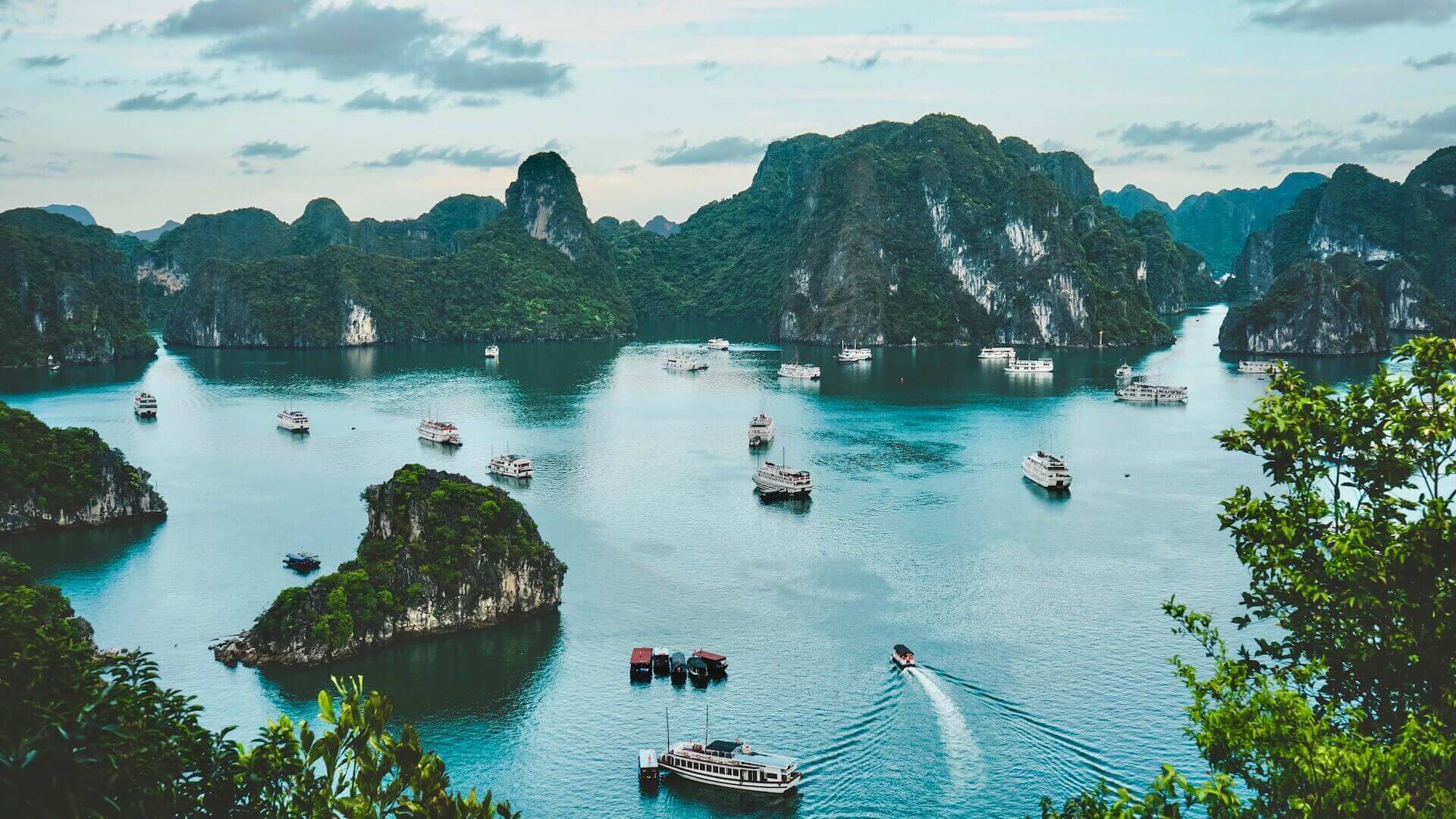
20 Most Photogenic Places in the World for Travel Photographers
Travel photography is a great way to capture the beauty and diversity of our planet. Whether you’re a professional photographer or a hobbyist, you’ll want to visit these 20 photogenic places in the world that will make your photos stand out. In this article, we’ll show you where to go, what to see, and how to take amazing photos at each destination. From stunning natural wonders to charming cultural landmarks, these are the most photogenic places in the world for travel photography.
Angkor Wat – Cambodia
Angkor Wat is one of the most famous historical sites in Asia and a UNESCO World Heritage Site. It is an ivory-white marble mausoleum built by the Khmer Empire by King Suryavarman II in memory of his beloved wife Mumtaz Mahal, who died in childbirth in 1631. The Taj Mahal is regarded by many as the best example of Mughal architecture and a symbol of India’s rich history. The mausoleum is located on the right bank of the Yamuna River in Agra, Uttar Pradesh, India.
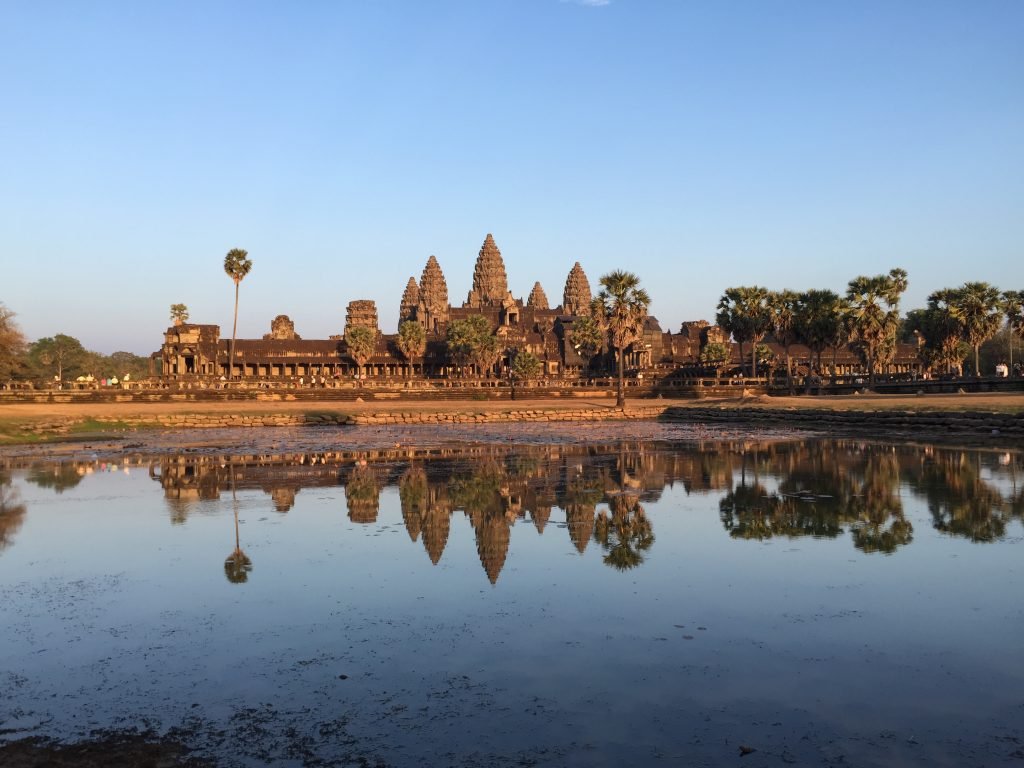
Tips on how to take stunning photos at Angkor Wat:
- Visit during sunrise or sunset to capture the best light and colors on the temple and its surroundings. You’ll also avoid crowds and have more space to take photos without distractions.
- Use a wide-angle lens to capture the whole scene and show the scale of the temple. You can also use a telephoto lens to zoom in on the details and textures of the architecture.
- Use a tripod to stabilize your camera and take sharp photos in low-light conditions. You’ll also be able to use longer exposures to create smooth water effects or star trails.
- Explore different viewpoints and angles around the temple. You can enter from different gates, such as the East Gate, West Gate, or South Gate. You can also visit some nearby attractions, such as Mehtab Bagh (a garden across the river), Agra Fort (a red sandstone fortress), or Itmad-ud-Daulah (a smaller marble mausoleum).
- Take advantage of the seasonal changes and activities at Angkor Wat. In the spring, you can see wildflowers and wildlife around the temple. In the summer, you can enjoy festivals, concerts, and street art in the temple. And in the autumn, you can see fall colors and cultural events in the temple. In the winter, you can see fog and mist around the temple, creating a mystical atmosphere.
Read more: 25 Interesting Angkor Wat Facts Everyone Should Know
Ha Long Bay – Vietnam
Ha Long Bay, also known as Vinh Ha Long in Vietnamese, is a UNESCO World Heritage Site and a popular travel destination in Quang Ninh Province, Vietnam. The name Ha Long means “descending dragon” in Vietnamese. The bay features thousands of limestone karsts and isles in various shapes and sizes, creating a stunning seascape. The bay is also home to many wildlife species, such as dolphins, seals, penguins, and birds.
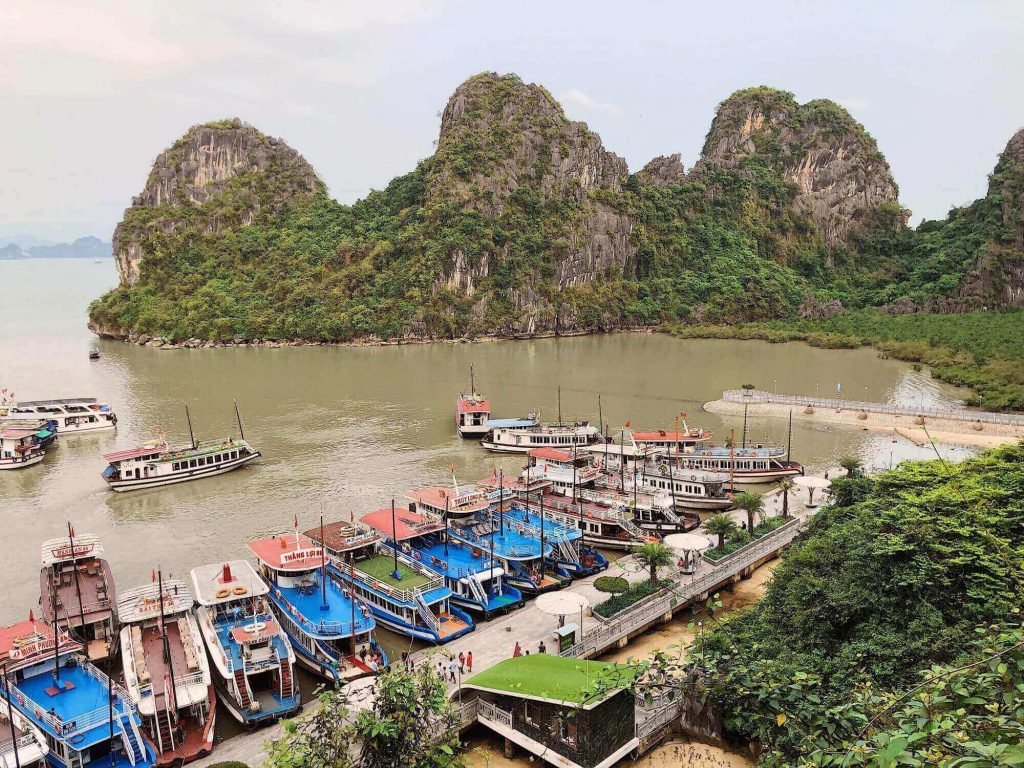
Tips on how to take stunning photos at Ha Long Bay:
- Visit during sunrise or sunset to capture the best light and colors on the bay and the mountains. You’ll also avoid crowds and have more space to take photos at one of the most photogenic places in the world without distractions.
- Use a polarizing filter to reduce glare and enhance the colors of the water and the sky. You’ll also be able to capture more details of the underwater life and the reflections of the mountains on the surface.
- Explore different viewpoints and angles around the bay. You can take a boat cruise or a kayak tour to visit different islands and caves, such as Sung Sot Cave, Ti Top Island, or Dau Go Cave. You can also hike up to some panoramic spots, such as Bai Tho Mountain, Poem Mountain, or Titov Island.
- Take advantage of the seasonal changes and activities at Ha Long Bay. In the spring, you can enjoy the blooming flowers and greenery around the bay. In the summer, you can relax on the beaches or try some water sports, such as sailing, kayaking, or windsurfing. Afterward, in the autumn, you can admire the changing colors of the foliage and the water. In the winter, you can see fog and mist around the bay, creating a mystical atmosphere.
Kyoto – Japan
Kyoto is the former imperial capital of Japan and a city of culture, history, and beauty. It’s home to over 2,000 temples and shrines, many of which are UNESCO World Heritage Sites. Kyoto is also known for its traditional arts and crafts, such as pottery, textiles, and tea ceremony. Kyoto is one of the best places to experience the charm and elegance of Japan.
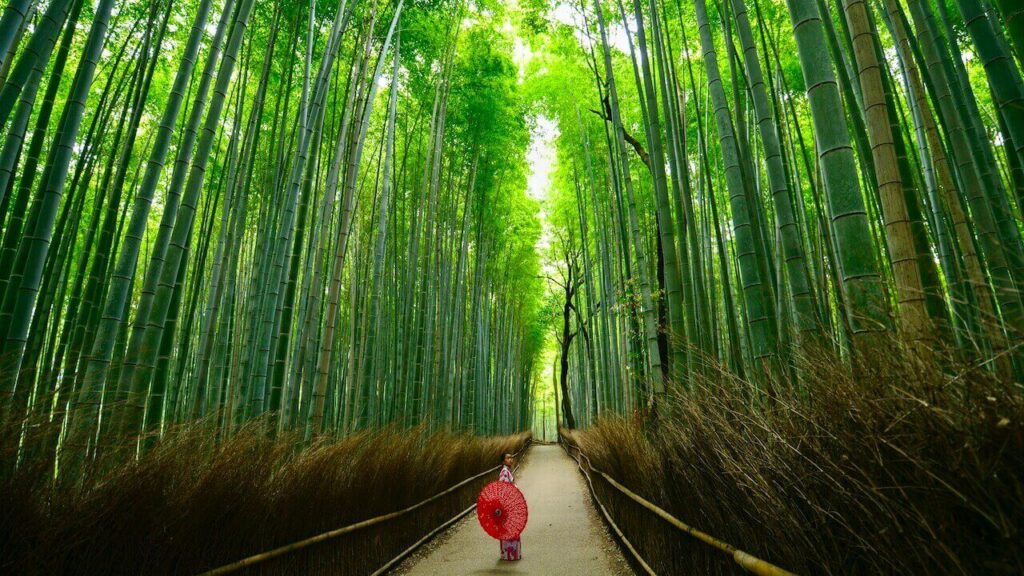
Tips on how to take stunning photos in Kyoto:
- Visit during sunrise or sunset to capture the best light and colors on the temples and the streets. You’ll also avoid crowds and have more space to take photos without distractions.
- Use a wide-angle lens to capture the whole scene and show the scale of the temples. You can also use a telephoto lens to zoom in on the details and textures of the architecture.
- Use a tripod to stabilize your camera and take sharp photos in low-light conditions. You’ll also be able to use longer exposures to create smooth water effects or star trails.
- Explore different viewpoints and angles around the city. You can walk along the Philosopher’s Path, which offers spectacular views of many temples and gardens. You can also visit some nearby attractions, such as Arashiyama Bamboo Forest, Fushimi Inari Shrine, or Nijo Castle.
- Take advantage of the seasonal changes and activities in Kyoto, one of the most photogenic places in the world. In the spring, you can see cherry blossoms in bloom, and experience world-class cuisine and the city’s famous art scene. In the summer, you can enjoy festivals, fireworks, and lanterns in the city. Then, in the autumn, you can see fall colors and maple leaves in the city. In the winter, you can see snow and ice on the temples and cozy cafes.
Read more: Kyoto: The Ultimate Guide to Japan’s Cultural Capital
Petra – Jordan
Petra, also known as Raqmu or Raqēmō in ancient times, is a historic and archaeological city in southern Jordan. It was the capital of the Nabataean kingdom, a powerful Arab state that ruled over the region from the 4th century BC to the 1st century AD. Petra is famous for its rock-cut architecture and water conduit system, which allowed the city to thrive in the desert. Petra is also a UNESCO World Heritage Site and one of the new seven wonders of the world.
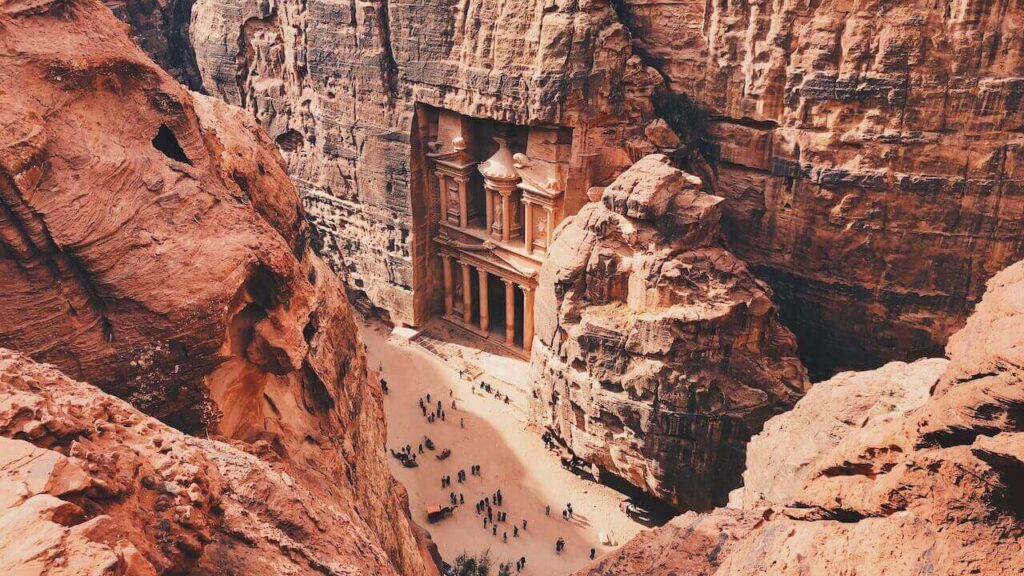
Tips on how to take stunning photos at Petra:
- Visit during sunrise or sunset to capture the best light and colors on the rock-cut buildings and their surroundings. You’ll also avoid crowds and have more space to take photos without distractions.
- Use a wide-angle lens to capture the whole scene and show the scale of the city. You can also use a telephoto lens to zoom in on the details and textures of the architecture.
- Use a tripod to stabilize your camera and take sharp photos in low-light conditions. You’ll also be able to use longer exposures to create smooth water effects or star trails.
- Explore different viewpoints and angles around the city. You can enter from different gates, such as the East Gate (the main entrance), West Gate (the back entrance), or South Gate (the alternative entrance). You can also visit some of the most famous monuments, such as Al-Khazneh (the Treasury), Ad-Deir (the Monastery), or Al-Siq (the narrow gorge).
- Take advantage of the seasonal changes and activities at Petra. In the spring, you can see wildflowers and wildlife around the city. In the summer, you can enjoy festivals, concerts, and street art in the city. Afterward, in the autumn, you can see fall colors and cultural events in the city. Finally, in the winter, you can see fog and mist around the city, creating a mystical atmosphere.
Taj Mahal – India
The Taj Mahal is one of the most famous historical sites in Asia and a UNESCO World Heritage Site. It is an ivory-white marble mausoleum built by the Mughal emperor Shah Jahan in memory of his beloved wife Mumtaz Mahal, who died in childbirth in 1631. The Taj Mahal is regarded by many as the best example of Mughal architecture and a symbol of India’s rich history. The mausoleum is located on the right bank of the Yamuna River in Agra, Uttar Pradesh, India.
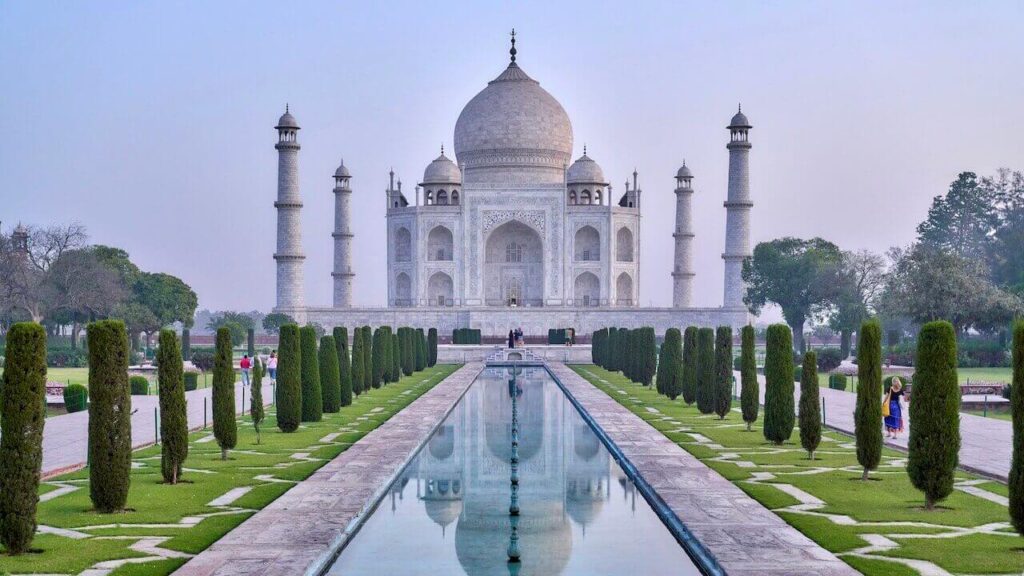
Tips on how to take stunning photos at the Taj Mahal:
- Visit during sunrise or sunset to capture the best light and colors on the mausoleum and its surroundings. You’ll also avoid crowds and have more space to take photos at one of the most photogenic places in the world without distractions.
- Use a tripod to stabilize your camera and take sharp photos in low-light conditions. You’ll also be able to use longer exposures to create silky-smooth water effects or star trails.
- Explore different viewpoints and angles around the mausoleum. You can enter from different gates, such as the East Gate, West Gate, or South Gate. You can also visit some nearby attractions, such as Mehtab Bagh (a garden across the river), Agra Fort (a red sandstone fortress), or Itmad-ud-Daulah (a smaller marble mausoleum).
- Take advantage of the seasonal changes and activities at the Taj Mahal. In the spring, you can enjoy the blooming flowers and greenery around the mausoleum. In the summer, you can see colorful umbrellas and kites in the sky. Whereas, in the monsoon season, you can see rainbows and dramatic clouds over the mausoleum. Then, in the winter, you can see fog and mist around the mausoleum, creating a mystical atmosphere.
Cappadocia – Turkey
Cappadocia, also known as Kapadokya in Turkish, is a historical region in Central Anatolia, Turkey. It’s a wonderland of rocky formations, cave dwellings, and hot air balloons. Cappadocia was formed by millions of years of volcanic eruptions, erosion, and human intervention. The region is also rich in culture and history, with traces of ancient civilizations, such as the Hittites, Persians, Romans, Byzantines, Seljuks, Mongols, and Ottomans.
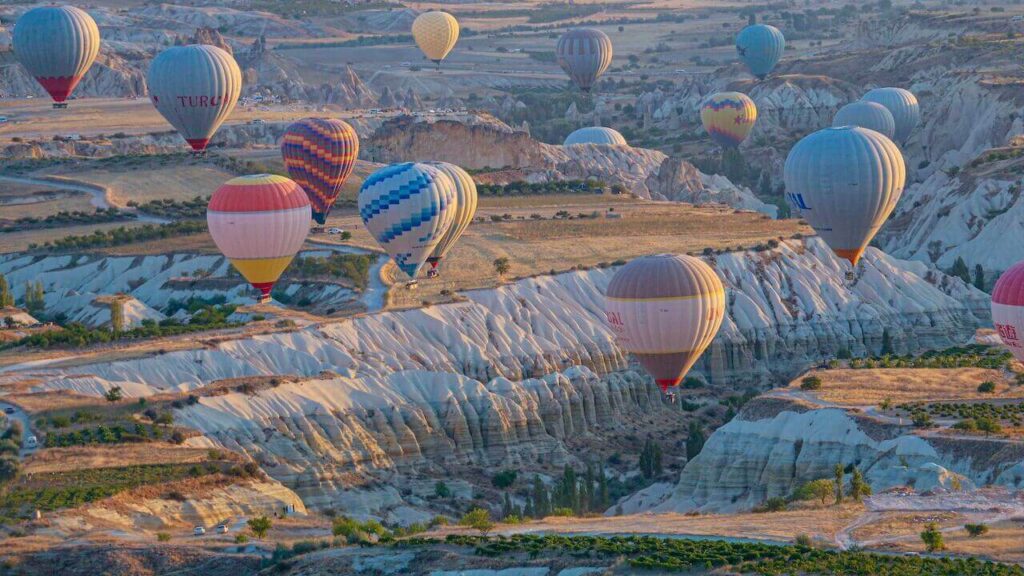
Tips on how to take stunning photos at Cappadocia:
- Visit during sunrise or sunset to capture the best light and colors on the fairy chimneys and the valleys. You’ll also avoid crowds and have more space to take photos without distractions.
- Use a wide-angle lens to capture the whole scene and show the scale of the landscape. You can also use a telephoto lens to zoom in on the details and textures of the rocks.
- Use a tripod to stabilize your camera and take sharp photos in low-light conditions. You’ll also be able to use longer exposures to create smooth water effects or star trails.
- Explore different viewpoints and angles around the region. You can take a hot air balloon ride or a horseback tour to see the region from above and admire its unique shape. You can also visit some of the cave churches, underground cities, or open-air museums that showcase the history and culture of Cappadocia.
- Take advantage of the seasonal changes and activities at Cappadocia. In the spring, you can see wildflowers and greenery around the region. In the summer, you can enjoy festivals, concerts, and pottery workshops in the region. Later, in the autumn, you can see fall colors and grape harvests in the region. In the winter, you can see snow and ice covering the fairy chimneys and cozy cave hotels.
Kinderdijk – Netherlands
Kinderdijk is a village in the province of South Holland, Netherlands. It’s famous for its historic windmill structure, which dates back to the 18th century. Indeed, the windmills were built to drain the polder, a low-lying land reclaimed from water. The windmills of Kinderdijk are one of the best-known Dutch tourist sites and a UNESCO World Heritage Site since 1997.
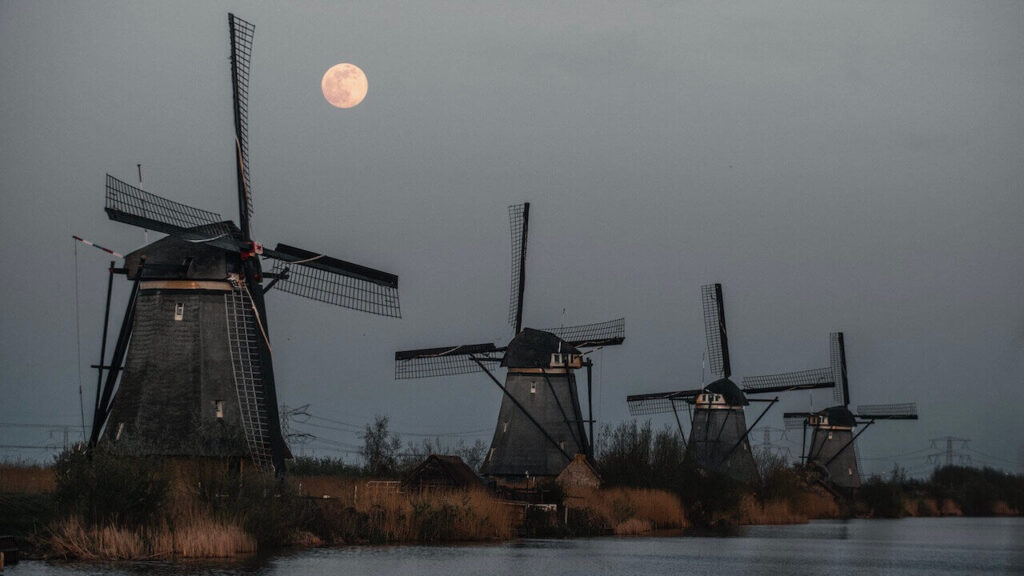
Tips on how to take stunning photos at Kinderdijk:
- Visit during sunrise or sunset to capture the best light and colors on the windmills and their surroundings. You’ll also avoid crowds and have more space to take photos without distractions.
- Use a wide-angle lens to capture the whole scene and show the scale of the windmills. You can also use a telephoto lens to zoom in on the details and textures of the windmills.
- Use a tripod to stabilize your camera and take sharp photos in low-light conditions. You’ll also be able to use longer exposures to create smooth water effects or star trails.
- Visit during different times of the year and seasons to see how the landscape changes at one of the most photogenic places in the world. In the spring, you can see tulips and other flowers blooming around the windmills. In the summer, you can see green fields and blue skies. Then, in the autumn, you can see golden leaves and foggy mornings. In the winter, you can see snow and ice covering the windmills.
Lake Como – Italy
Lake Como, also known as Lario, is the third largest Italian lake (after Lake Garda and Lake Maggiore). Located at the foot of the Alps, Lake Como offers some of the most romantic and picturesque sceneries in the world. Its characteristic shape, resembling an inverted Y, comes from the melting of glaciers combined with the erosive action of the ancient Adda River. The lake is surrounded by picturesque villages, elegant villas, and lush gardens that attract millions of visitors every year.
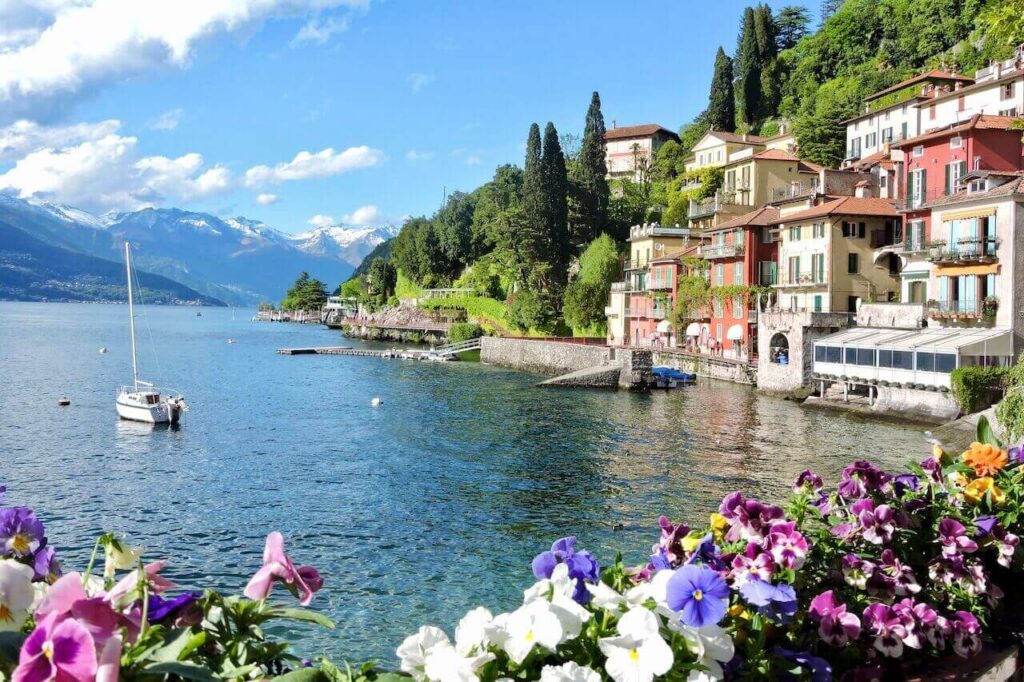
Tips on how to take stunning photos at Lake Como:
- Visit during sunrise or sunset to capture the best light and colors on the lake and the mountains. You’ll also avoid crowds and have more space to take photos without distractions.
- Use a polarizing filter to reduce glare and enhance the colors of the water and the sky. You’ll also be able to capture more details of the underwater life and the reflections of the mountains on the surface.
- Explore different viewpoints and angles around the lake. You can take a boat ride or a ferry to visit different towns and islands, such as Bellagio, Varenna, Menaggio, and Isola Comacina. You can also hike up to some panoramic spots, such as Brunate, Monte San Primo, or Monte Generoso.
- Take advantage of the seasonal changes and activities at Lake Como. In the spring, you can enjoy the blooming flowers and greenery around the lake. While in the summer, you can relax on the beaches or try some water sports, such as sailing, kayaking, or windsurfing. In the autumn, you can admire the changing colors of the foliage and the vineyards. And in the winter, you can see snow-capped mountains and cozy villages.
Paris – France
Paris is the capital and most populous city of France, with an official estimated population of 2,102,650 residents as of 1 January 2023. It’s one of the world’s major centers of culture, art, fashion, and gastronomy. Paris has many iconic landmarks, such as the Eiffel Tower, the Arc de Triomphe, the Louvre Museum, and Notre Dame Cathedral.
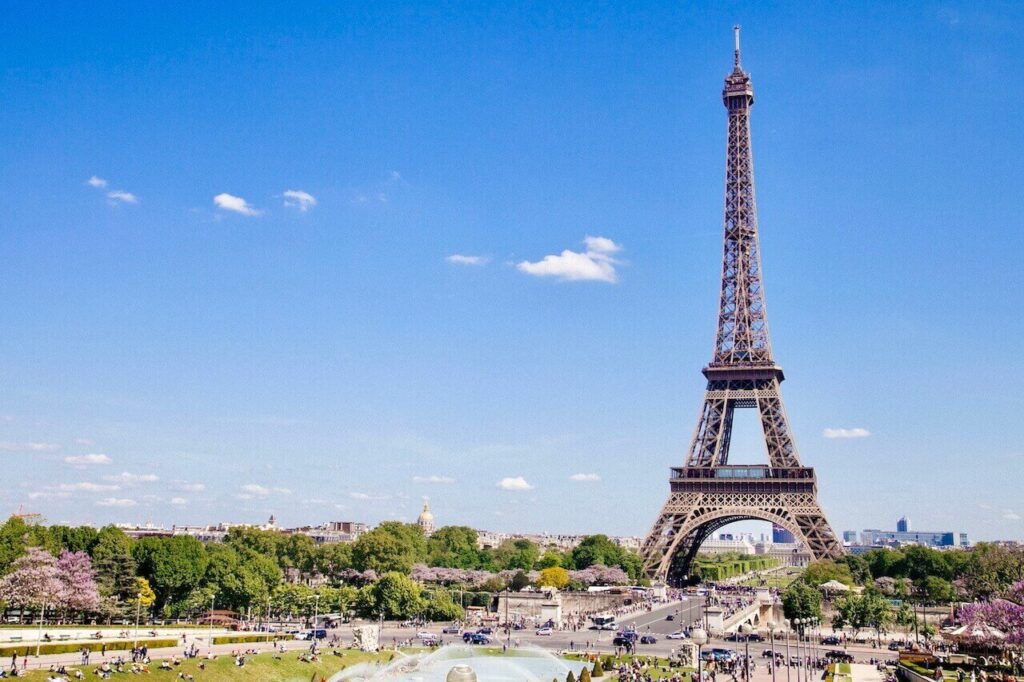
Tips on how to take stunning photos in Paris:
- Visit during sunrise or sunset to capture the best light and colors on the monuments and the streets. You’ll also avoid crowds and have more space to take photos at one of the most photogenic places in the world without distractions.
- Use a wide-angle lens to capture the whole scene and show the scale of the monuments. You can also use a telephoto lens to zoom in on the details and textures of the architecture.
- Use a tripod to stabilize your camera and take sharp photos in low-light conditions. You’ll also be able to use longer exposures to create smooth water effects or light trails.
- Explore different viewpoints and angles around the city. You can walk along the Seine River, which offers spectacular views of many monuments and bridges. You can also visit some nearby attractions, such as Versailles Palace, Disneyland Paris, or Montmartre.
- Take advantage of the seasonal changes and activities in Paris. First, in the spring, you can enjoy the blooming flowers and greenery around the city. In the summer, you can relax on the beaches or try some water sports, such as sailing, kayaking, or windsurfing. Next, in the autumn, you can admire the changing colors of the foliage and the vineyards. Finally, in the winter, you can see snow and ice covering the monuments and cozy cafes…
Read more: The Best Places to Visit in France for First-Time Visitors
Santorini – Greece
Santorini, also known as Thira, is one of the most iconic Greek islands, with its white-washed houses, blue-domed churches, and caldera views. The island is the result of a massive volcanic eruption that occurred about 3,600 years ago, creating a crescent-shaped basin surrounded by steep cliffs. Santorini is a popular destination for romance, relaxation, and adventure.
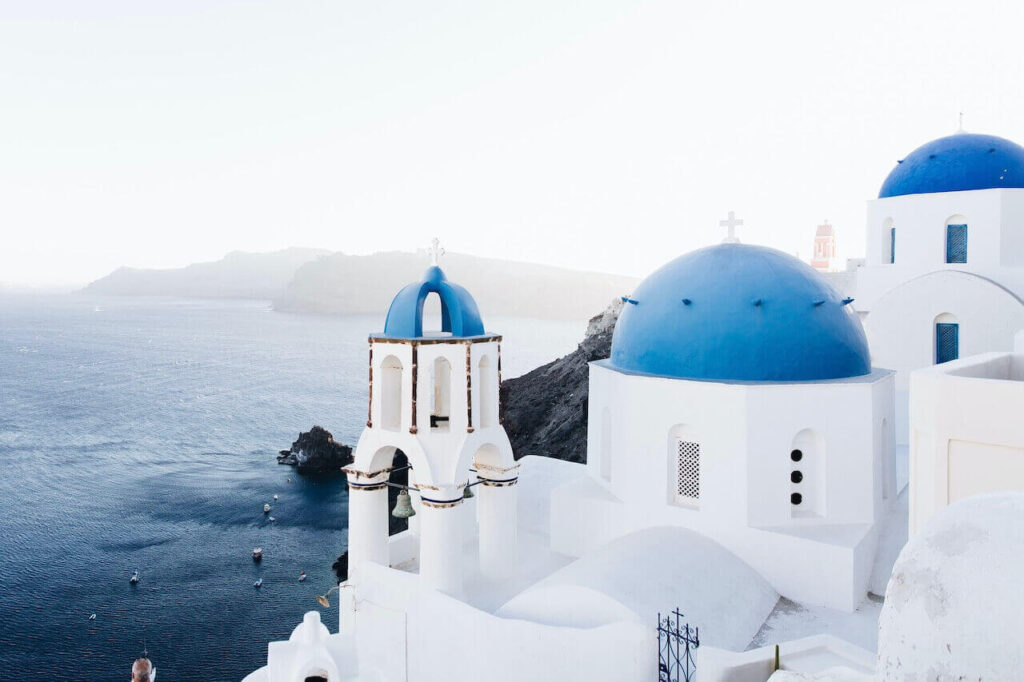
Tips on how to take stunning photos at Santorini:
- Visit during sunrise or sunset to capture the best light and colors on the island and the sea. You’ll also avoid crowds and have more space to take photos at one of the most photogenic places in the world without distractions.
- Use a wide-angle lens to capture the whole scene and show the scale of the island. You can also use a telephoto lens to zoom in on the details and textures of the buildings.
- Use a tripod to stabilize your camera and take sharp photos in low-light conditions. You’ll also be able to use longer exposures to create smooth water effects or star trails.
- Explore different viewpoints and angles around the island. You can walk along the caldera edge, which offers spectacular views of the volcano and the sunset. You can also visit some of the picturesque villages, such as Oia, Fira, or Imerovigli.
- Take advantage of the seasonal changes and activities at Santorini. In the spring, you can see wildflowers and greenery around the island. In the summer, you can relax on the beaches or try some water sports, such as sailing, kayaking, or windsurfing. Then, in the autumn, you can admire the changing colors of the grapes and the wine festivals. And in the winter, you can see snow and ice on the cliffs and cozy cafes.
Segovia – Spain
Segovia is a picturesque old city in the Castile and León region of Spain. It’s a UNESCO World Heritage Site, with a rich history and culture. Segovia is famous for its historic buildings, including three main landmarks: its midtown Roman aqueduct, its Gothic cathedral, and its medieval castle, also known as the Alcázar.
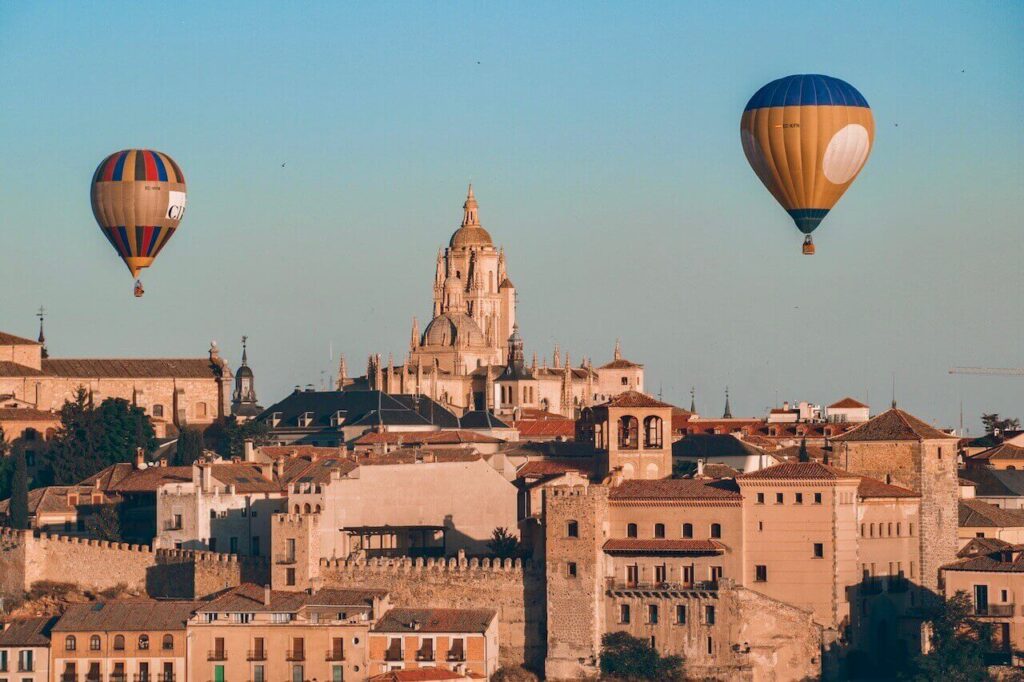
Tips on how to take stunning photos in Segovia:
- Visit during sunrise or sunset to capture the best light and colors on the buildings and the streets. You’ll also avoid crowds and have more space to take photos at one of the most photogenic places in the world without distractions.
- Use a wide-angle lens to capture the whole scene and show the scale of the aqueduct. You can also use a telephoto lens to zoom in on the details and textures of the architecture.
- Use a tripod to stabilize your camera and take sharp photos in low-light conditions. You’ll also be able to use longer exposures to create smooth water effects or light trails.
- Explore different viewpoints and angles around the city. You can walk along the Eresma River, which offers spectacular views of the Alcázar and the cathedral. You can also visit some nearby attractions, such as La Granja de San Ildefonso (a royal palace and gardens), Pedraza (a medieval walled town), or Sepúlveda (a hilltop village).
- Take advantage of the seasonal changes and activities at Segovia. In the spring, you can enjoy the blooming flowers and greenery around the city. In the summer, you can relax on the terraces or try some local cuisine, such as cochinillo (roast suckling pig) or judiones (large white beans). After that, in the autumn, you can admire the changing colors of the foliage and the vineyards. In the winter, you can see snow and ice covering the buildings and cozy cafes.
Unstad – Norway
Unstad is a small village in the Lofoten Islands, an archipelago in Arctic Norway. It’s a popular surfing destination, with waves that can reach up to six meters high. Additionally, Unstad is a place with many majestic landscapes, such as mountains, fjords, and beaches.
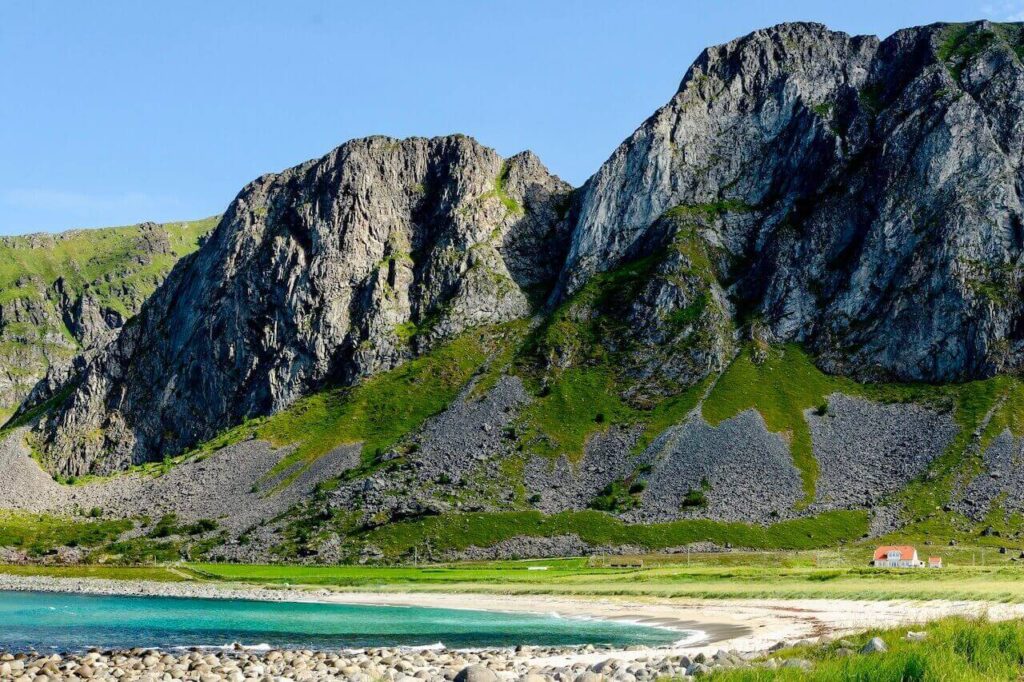
Tips on how to take stunning photos at Unstad:
- Visit during sunrise or sunset to capture the best light and colors on the waves and the scenery. You’ll also avoid crowds and have more space to take photos without distractions.
- Use a wide-angle lens to capture the whole scene and show the scale of the waves. You can also use a telephoto lens to zoom in on the details and textures of the water.
- Use a fast shutter speed to freeze the motion of the waves and create sharp images. You can also use a slow shutter speed to create a smooth and silky effect, but you’ll need a tripod and a neutral density filter to avoid overexposure.
- Visit during different times of the year and seasons to see how the weather and the waves change. In the summer, you can enjoy the warm weather and the gentle waves. In the winter, you can see snow and ice around the waves, and experience surfing under the northern lights. You can also try some other activities, such as hiking, fishing, or kayaking.
Great Smoky Mountains – USA
Great Smoky Mountains are a mountain range rising along the Tennessee – North Carolina border in the southeastern United States. They are a subrange of the Appalachian Mountains and form part of the Blue Ridge Physiographic Province. The range is best known as the home of the Great Smoky Mountains National Park, which protects most of the range. In fact, the park is the most visited national park in the United States, with over 11 million visits per year. In addition, the range is home to an estimated 187,000 acres of old-growth forest, constituting the largest such stand east of the Mississippi River.
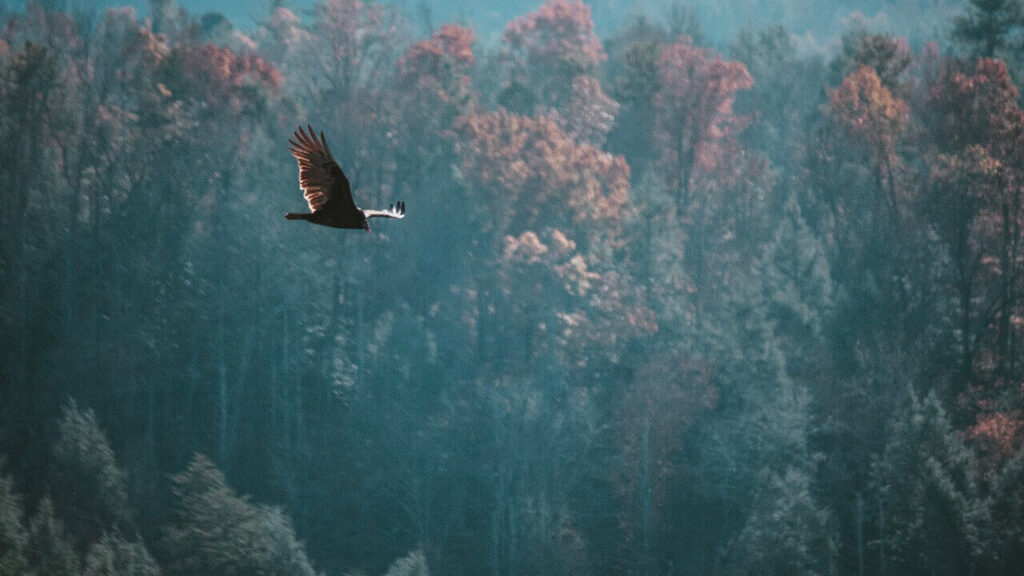
Tips on how to take stunning photos of The Great Smoky Mountains:
- Visit during sunrise or sunset to capture the best light and colors on the mountains and the valleys. You’ll also avoid crowds and have more space to take photos without distractions.
- Use a tripod to stabilize your camera and take sharp photos in low-light conditions. You’ll also be able to use longer exposures to create smooth water effects or star trails.
- Explore different viewpoints and angles around the park. You can drive along scenic roads, such as Newfound Gap Road, Cades Cove Loop Road, or Roaring Fork Motor Nature Trail. You can also hike to some spectacular spots, such as Clingmans Dome, Charlies Bunion, or Alum Cave Bluffs.
- Take advantage of the seasonal changes and activities at The Great Smoky Mountains. In the spring, you can see wildflowers and wildlife around the park. In the summer, you can enjoy hiking, camping, fishing, or biking in the park. Later, in the autumn, you can see fall colors and festivals in the park. In the winter, you can see snow and ice on the mountains and cozy cabins in the park.
Lake Louise – Canada
Lake Louise is one of Canada’s most photographed places and a must-see destination in Banff National Park. It’s a glacial lake with crystal clear blue water surrounded by snow-capped mountains. The lake is also known as the “Jewel of the Rockies” and attracts millions of visitors every year.
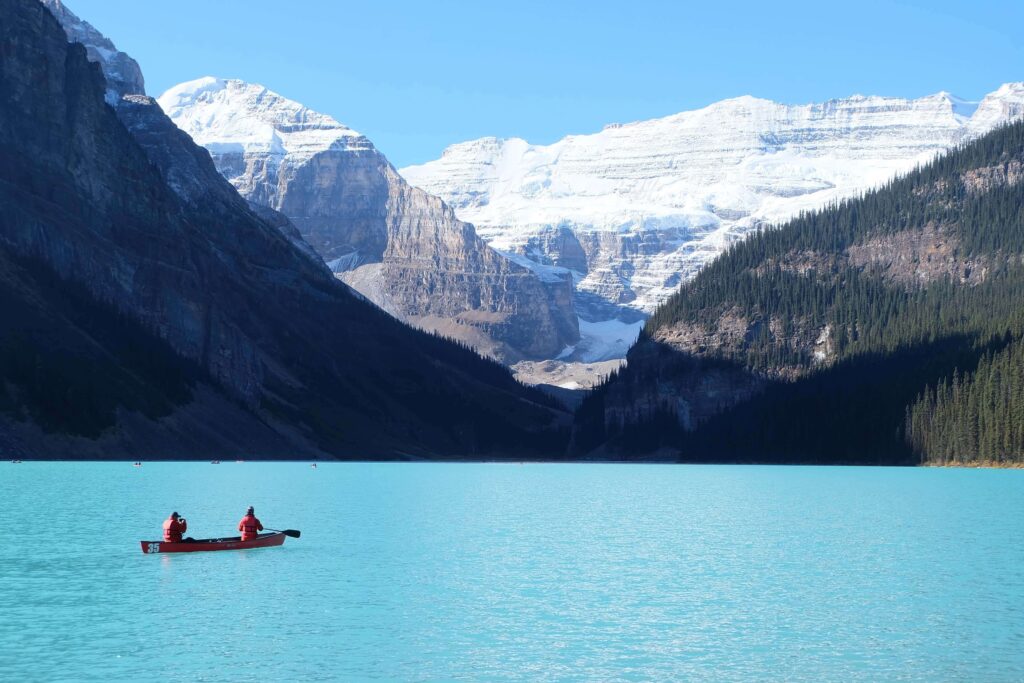
Tips on how to take stunning photos at Lake Louise:
- Visit during sunrise or sunset to capture the best light and colors on the lake and the mountains. You’ll also avoid crowds and have more space to take photos at one of the most photogenic places in the world without distractions.
- Use a tripod to stabilize your camera and take sharp photos in low-light conditions. You’ll also be able to use longer exposures to create silky-smooth water effects or star trails.
- Explore different viewpoints and angles around the lake. You can walk along the Lake Louise Shoreline Trail, which is open year-round and offers spectacular views of the lake and the Fairmont Chateau Lake Louise Hotel. You can also hike up to the Fairview Lookout, which overlooks the lake from a higher elevation.
- Take advantage of the seasonal changes and activities at Lake Louise. In the summer, you can rent a canoe or kayak and paddle on the lake, or enjoy the blooming wildflowers and greenery around the lake. In the winter, you can skate on the frozen lake, or admire the ice sculptures and snow-covered scenery.
Read more: 8 Days Canada Travel from Toronto to Winnipeg and Banff National Park
New York City – USA
New York City, also known as NYC or The Big Apple, is the most populous and most international city in the United States, with an estimated population of 8.4 million people as of 2020. It’s a global hub of culture, art, fashion, media, and business, with many iconic landmarks, such as the Statue of Liberty, the Empire State Building, Times Square, and Central Park.
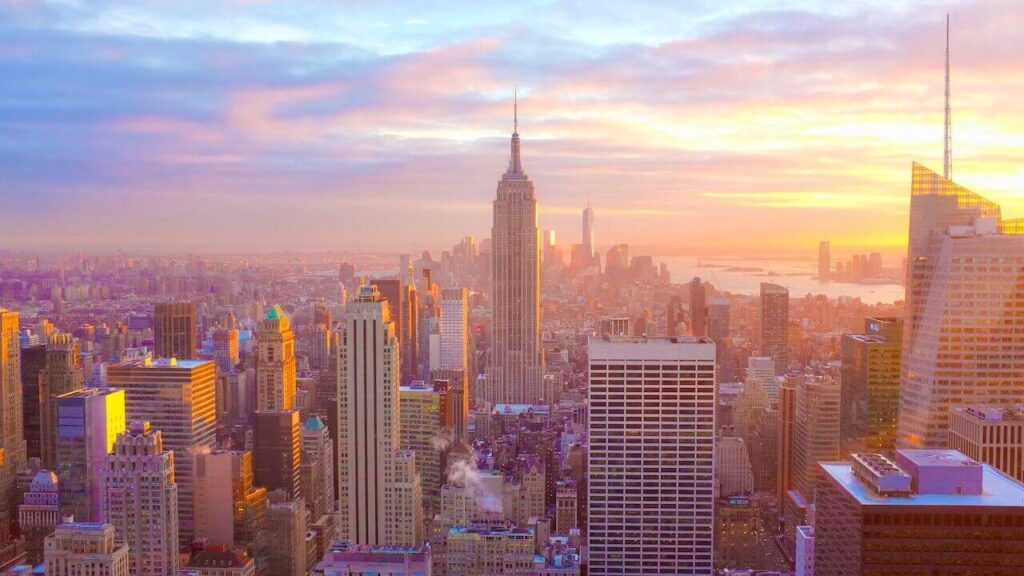
Tips on how to take stunning photos in New York City:
- Visit during sunrise or sunset to capture the best light and colors on the skyscrapers and the bridges. You’ll also avoid crowds and have more space to take photos without distractions.
- Use a wide-angle lens to capture the whole scene and show the scale of the city. You can also use a telephoto lens to zoom in on the details and textures of the buildings.
- Use a tripod to stabilize your camera and take sharp photos in low-light conditions. You’ll also be able to use longer exposures to create smooth water effects or light trails.
- Explore different viewpoints and angles around the city. You can take a ferry or a helicopter tour to see the city from above and admire its unique shape, resembling a grid. You can also visit some nearby attractions, such as Brooklyn Bridge Park, Top of the Rock, or One World Observatory.
- Take advantage of the seasonal changes and activities in New York City. In the spring, you can see cherry blossoms and tulips around the city. In the summer, you can enjoy festivals, concerts, and street art in the city. And in the autumn, you can see fall colors and Halloween decorations in the city. In the winter, you can see snow and ice skating rinks in the city.
Bora Bora – French Polynesia
Bora Bora, also known as Pora Pora in Tahitian, is an island group in the Leeward Islands of French Polynesia. It’s a tropical paradise with turquoise waters, coral reefs, and overwater bungalows. Bora Bora is one of the most popular and romantic destinations in the South Pacific, attracting celebrities and honeymooners from around the world.
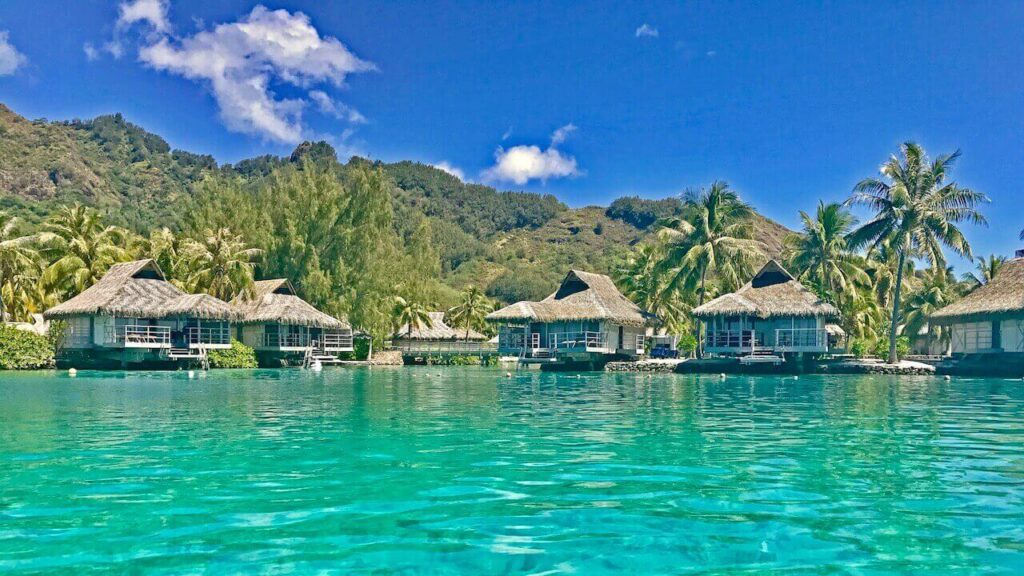
Tips on how to take stunning photos at Bora Bora:
- Visit during sunrise or sunset to capture the best light and colors on the lagoon and the mountains. You’ll also avoid crowds and have more space to take photos without distractions.
- Use a polarizing filter to reduce glare and enhance the colors of the water and the sky. You’ll also be able to capture more details of the underwater life and the reflections of the mountains on the surface.
- Explore different viewpoints and angles around the island. You can take a boat ride or a helicopter tour to see the island from above and admire its unique shape, resembling an inverted Y. You can also snorkel or scuba dive to see the colorful fish and coral formations.
- Take advantage of the seasonal changes and activities at Bora Bora. In the summer, you can enjoy the warm weather and the clear water. In the winter, you can see humpback whales migrating through the lagoon. You can also try some water sports, such as jet skiing, parasailing, or kite surfing.
Milford Sound – New Zealand
Milford Sound, also known as Piopiotahi in Māori, is one of the most iconic attractions and a UNESCO World Heritage Site in New Zealand’s Fiordland National Park. It’s a fjord that was carved by glaciers millions of years ago, creating a stunning landscape of coral reefs, mountain peaks, and multi-tiered waterfalls.
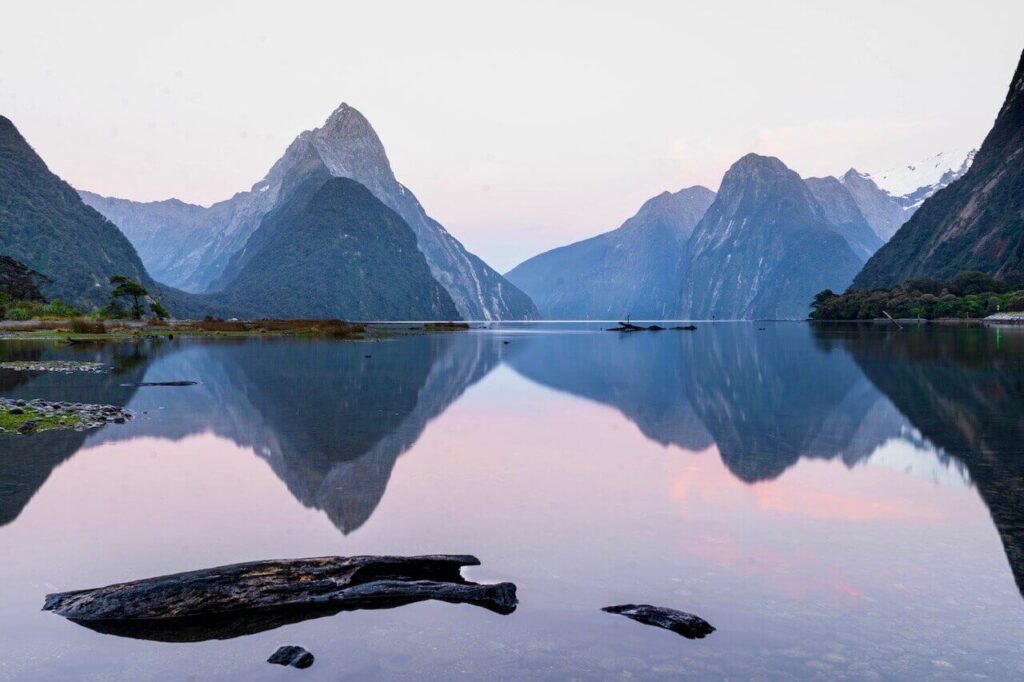
Tips on how to take stunning photos at Milford Sound:
- Take a boat cruise or a kayak tour to explore the fjord from different angles and perspectives. You’ll be able to see the wildlife, such as dolphins, seals, penguins, and birds, as well as the majestic Mitre Peak that rises 1,692 meters above sea level.
- Use a polarizing filter to reduce glare and enhance the colors of the water and the sky. You’ll also be able to capture more details of the underwater life and the reflections of the mountains on the surface.
- Visit during sunrise or sunset to catch the golden hour light that creates dramatic contrasts and shadows. You’ll also have a chance to see the fiord covered in mist or fog, adding a mystical touch to your photos.
- Don’t let the rain stop you from taking photos. Milford Sound is known as the wettest place in New Zealand, receiving an average of 182 days of rainfall a year. The rain creates hundreds of temporary waterfalls that cascade down the cliffs, creating a spectacular sight.
Rio de Janeiro – Brazil
Rio de Janeiro, also known as Rio or Cidade Maravilhosa (Marvellous City), is the capital of the state of Rio de Janeiro and the second most populous city in Brazil. It’s a global city of culture, art, fashion, media, and business, with many iconic landmarks, such as the Christ the Redeemer statue, the Sugarloaf Mountain, Copacabana Beach, and Maracanã Stadium. Rio de Janeiro is also famous for its carnival, samba, bossa nova, and natural beauty. Therefore, Rio de Janeiro is one of the most photogenic places in the world with so many objects for travel photographers.
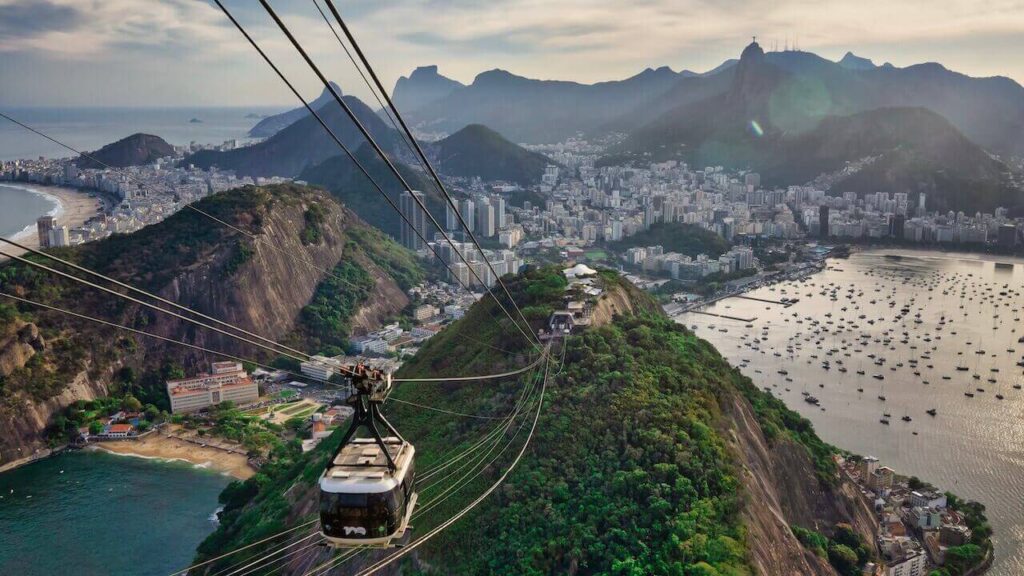
Tips on how to take stunning photos in Rio de Janeiro:
- Visit during sunrise or sunset to capture the best light and colors on the monuments and the beaches. You’ll also avoid crowds and have more space to take photos without distractions.
- Use a wide-angle lens to capture the whole scene and show the scale of the city. You can also use a telephoto lens to zoom in on the details and textures of the buildings.
- Use a tripod to stabilize your camera and take sharp photos in low-light conditions. You’ll also be able to use longer exposures to create smooth water effects or light trails.
- Explore different viewpoints and angles around the city. You can take a cable car or a helicopter tour to see the city from above and admire its unique shape. You can also visit some nearby attractions, such as Tijuca National Park, Botanical Garden, or Santa Teresa.
- Take advantage of the seasonal changes and activities in Rio de Janeiro. In the spring, you can see flowers and wildlife around the city. In the summer, you can enjoy festivals, concerts, and street art in the city. Afterward, in the autumn, you can see changing colors and cultural events in the city. In the winter, you can see snow-capped mountains and cozy cafes in the city.
Salar de Uyuni – Bolivia
Salar de Uyuni, also known as Salar de Tunupa, is the world’s largest salt flat, or playa, at over 10,000 km2 in area. It is in the Daniel Campos Province in Potosí in southwest Bolivia, near the crest of the Andes at an elevation of 3,656 m above sea level. The Salar was formed as a result of transformations between several prehistoric lakes that existed around forty thousand years ago but had all evaporated over time. It is now covered by a few meters of salt crust, which has an extraordinary flatness with average elevation variations within one meter over the entire area of the Salar. The crust serves as a source of salt and covers a pool of brine, which is exceptionally rich in lithium. The large area, clear skies, and exceptional flatness of the surface make the Salar ideal for calibrating the altimeters of Earth observation satellites. Following rain, a thin layer of dead calm water transforms the flat into the world’s largest mirror, 129 km across.
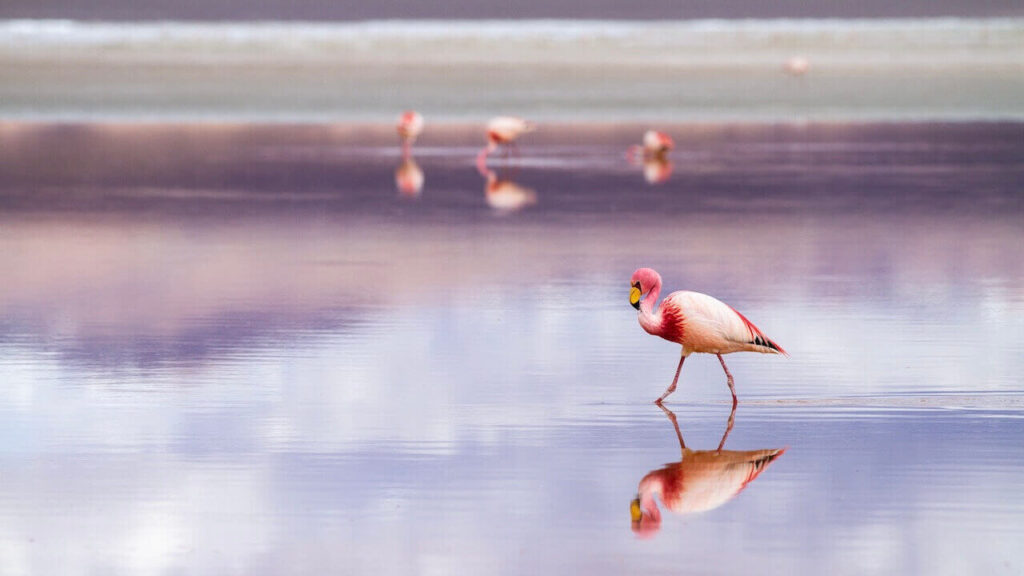
Tips on how to take stunning photos at Salar de Uyuni:
- Visit during sunrise or sunset to capture the best light and colors on the salt and the sky. You’ll also avoid crowds and have more space to take photos without distractions.
- Use a wide-angle lens to capture the whole scene and show the scale of the salt flat. You can also use a telephoto lens to zoom in on the details and textures of the salt.
- Use a tripod to stabilize your camera and take sharp photos in low-light conditions. You’ll also be able to use longer exposures to create smooth water effects or star trails.
- Explore different viewpoints and angles around the salt flat. You can take a 4×4 tour or a bike ride to visit different islands and cacti, such as Incahuasi Island, Coquesa Island, or Thunupa Volcano. You can also visit some nearby attractions, such as Colchani Village, Train Cemetery, or Red Lagoon.
- Take advantage of the seasonal changes and activities at Salar de Uyuni. In the spring, you can see wildflowers and greenery around the salt flat. In the summer, you can enjoy festivals, concerts, and pottery workshops in the salt flat. After that, in the autumn, you can admire the changing colors of the salt and the water. In the winter, you can see snow and ice covering the salt flats and cozy cave hotels.
Salto Grande – Chile
Salto Grande is one of the most famous waterfalls in Chile, located in the Torres del Paine National Park. It’s where Nordenskjöld Lake drops into Pehoe Lake, creating a powerful and spectacular sight. The waterfall is about 15 meters high and has a beautiful turquoise color from the glacial sediments in the water.
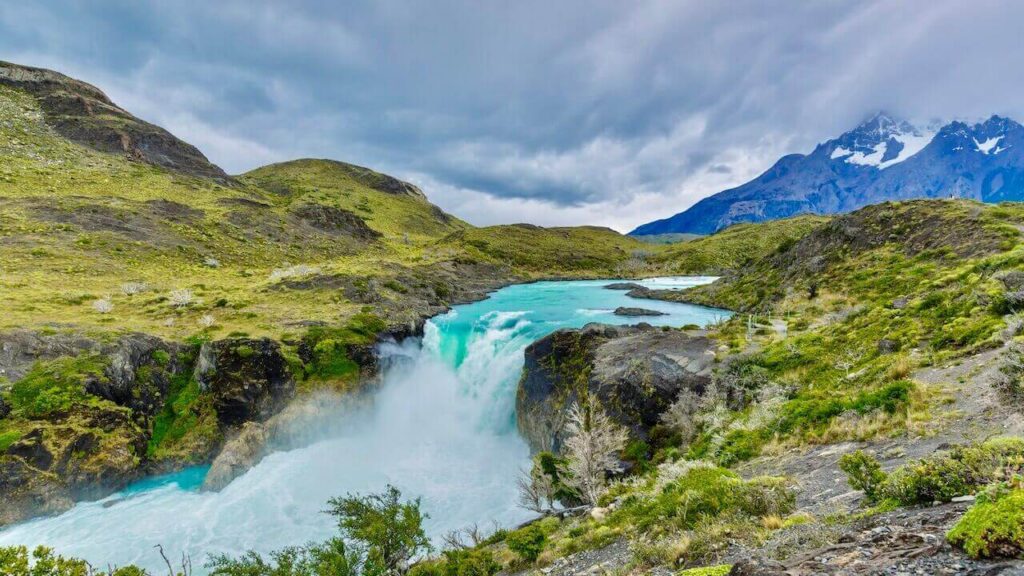
Tips on how to take stunning photos at Salto Grande:
- Take a short hike from the parking lot to the lookout point, where you can see the waterfall from above and admire the contrast between the blue water and the green vegetation.
- Use a wide-angle lens to capture the whole scene and show the scale of the waterfall. You can also use a telephoto lens to zoom in on the details and textures of the water.
- Use a fast shutter speed to freeze the motion of the water and create sharp images. You can also use a slow shutter speed to create a smooth and silky effect, but you’ll need a tripod and a neutral density filter to avoid overexposure.
- Visit during different times of the day and seasons of the year to see how the light and colors change. The waterfall is especially beautiful during sunrise and sunset when the golden light creates dramatic shadows and reflections. In winter, you can see snow and ice around the waterfall, adding more contrast and interest to your photos.
Final Thoughts
We hope you enjoyed this article and found some inspiration for your next travel photography adventure. These 20 photogenic places in the world are just a fraction of the amazing destinations that await you. Whether you prefer mountains or beaches, cities or countryside, there’s something for everyone. So grab your camera and start planning your trip to these photogenic places in the world. You’ll be amazed by the results.
The Broad Life introduces to you great, inspirational books for your wanderlust. They aren’t just simple travel, each book recounts the author’s journey to discover and learn many awesome things from new civilizations and places.
> READ MORE: THE BEST TRAVEL BOOKS OF ALL TIME
‘PIN IT’ NOW TO SAVE YOUR LIST OF THE MOST PHOTOGENIC PLACES IN THE WORLD
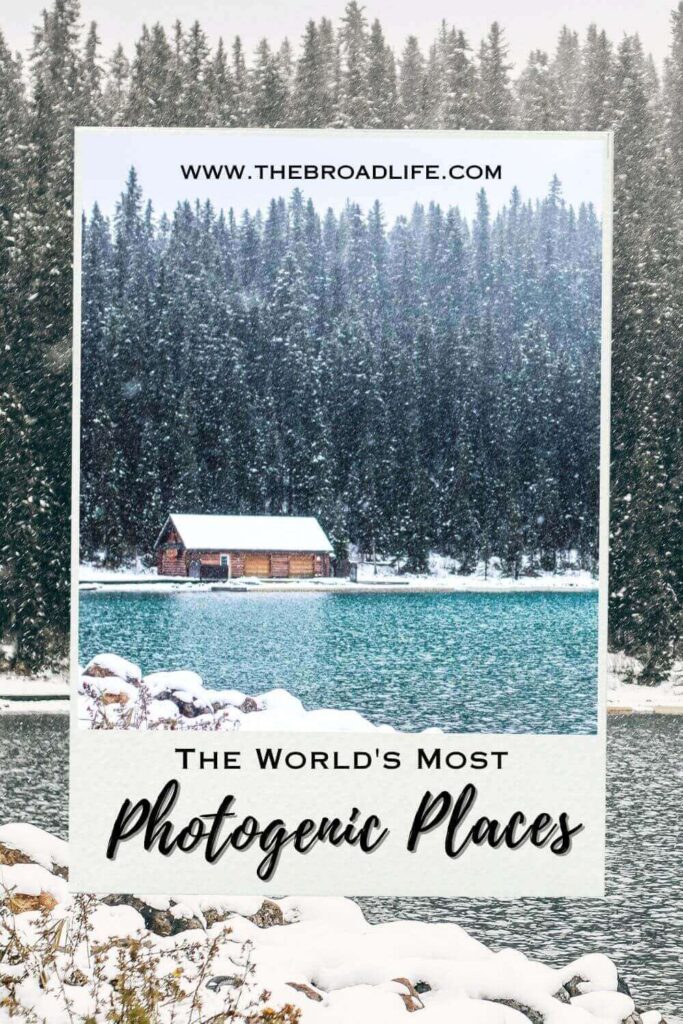
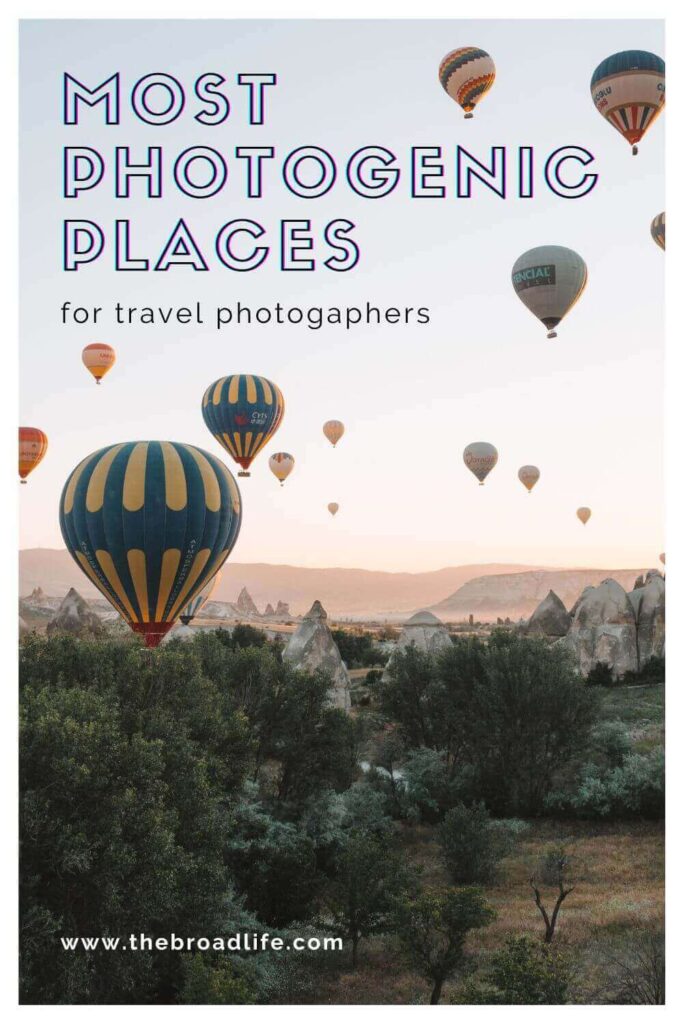
11 Comments
-
-
Sonia Seivwright
I absolutely love Kyoto! It’s such a beautiful city with so much culture and history. The temples and shrines are absolutely stunning, and it’s amazing that so many of them are UNESCO World Heritage Sites. I also appreciate the traditional arts and crafts that Kyoto is known for, such as pottery, textiles, and tea ceremony. It truly is one of the best places to experience the charm and elegance of Japan.
-
Monidipa
Your article on the 20 most photogenic places in the world is an absolute gem for travel photographers! The stunning destinations you’ve chosen and the captivating descriptions make it a dream come true for photography enthusiasts. Keep sharing these incredible insights and inspiring us all!
-
Lorinda Tellefson
I went over this website and I conceive you have a lot of great information, saved to fav (:.
-
Rubin Feigenbaum
Wonderful post will be linking this on a few sites of mine keep up the good work.
-
Maria Tamburro
Good info. Lucky me I reach on your web site by accident, I bookmarked it.



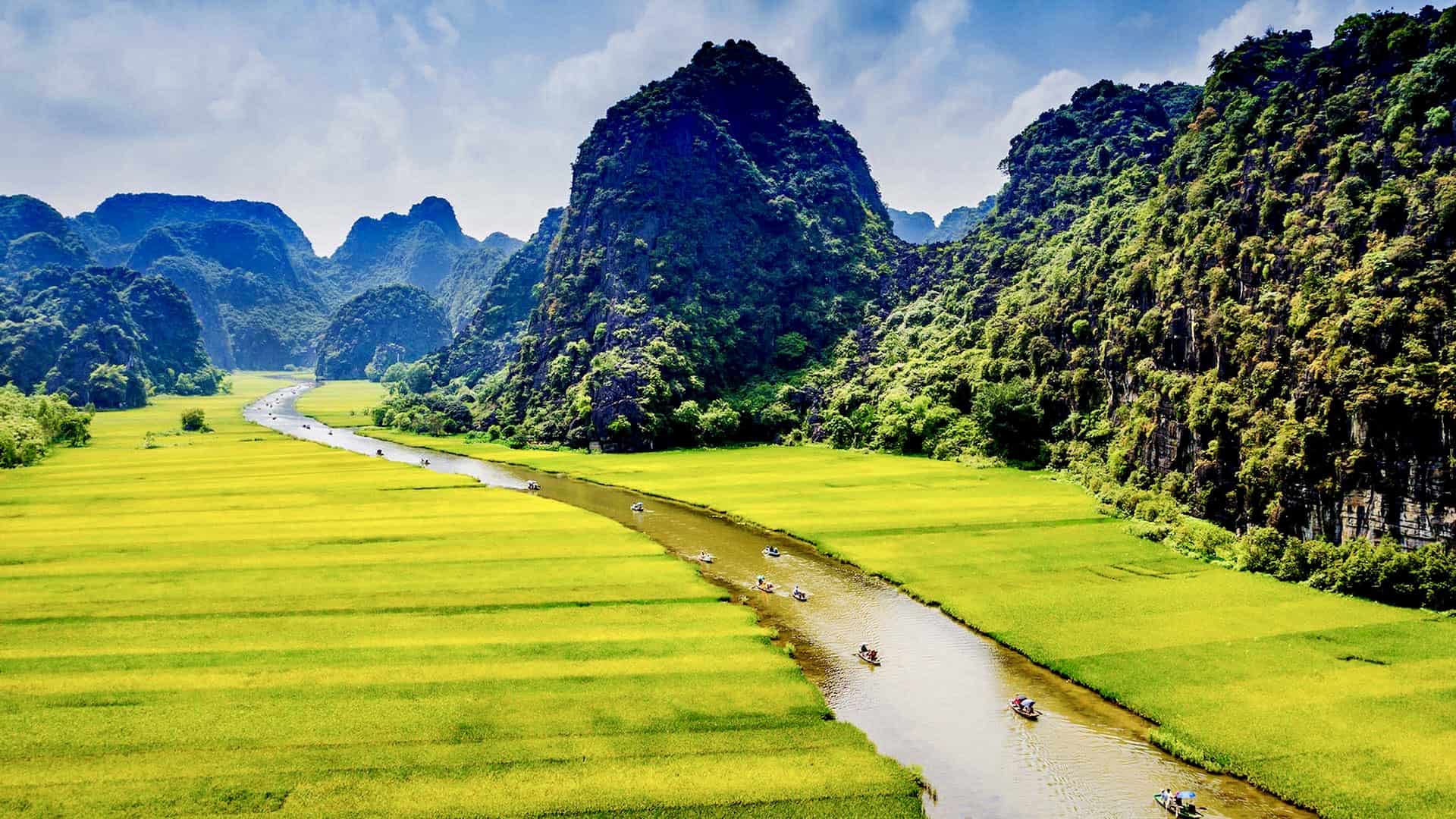
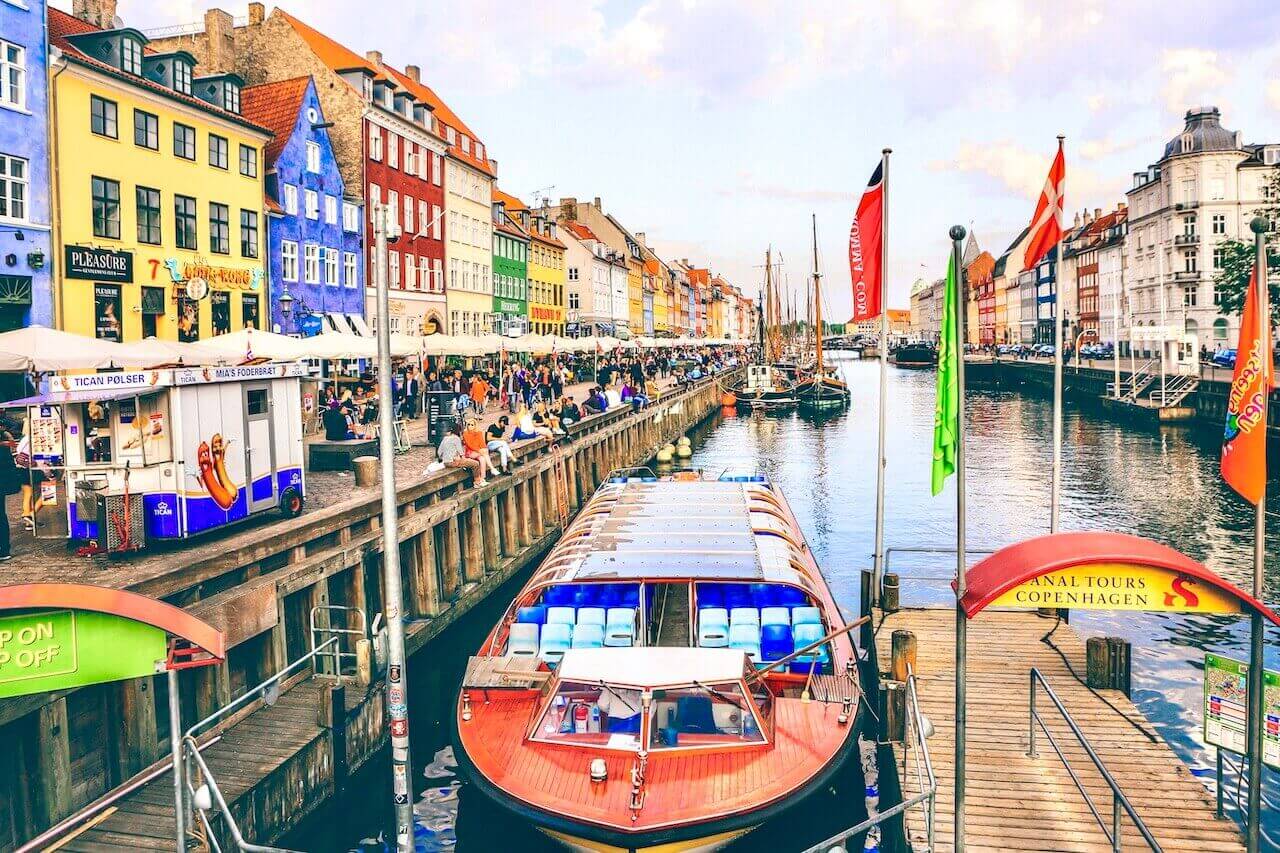
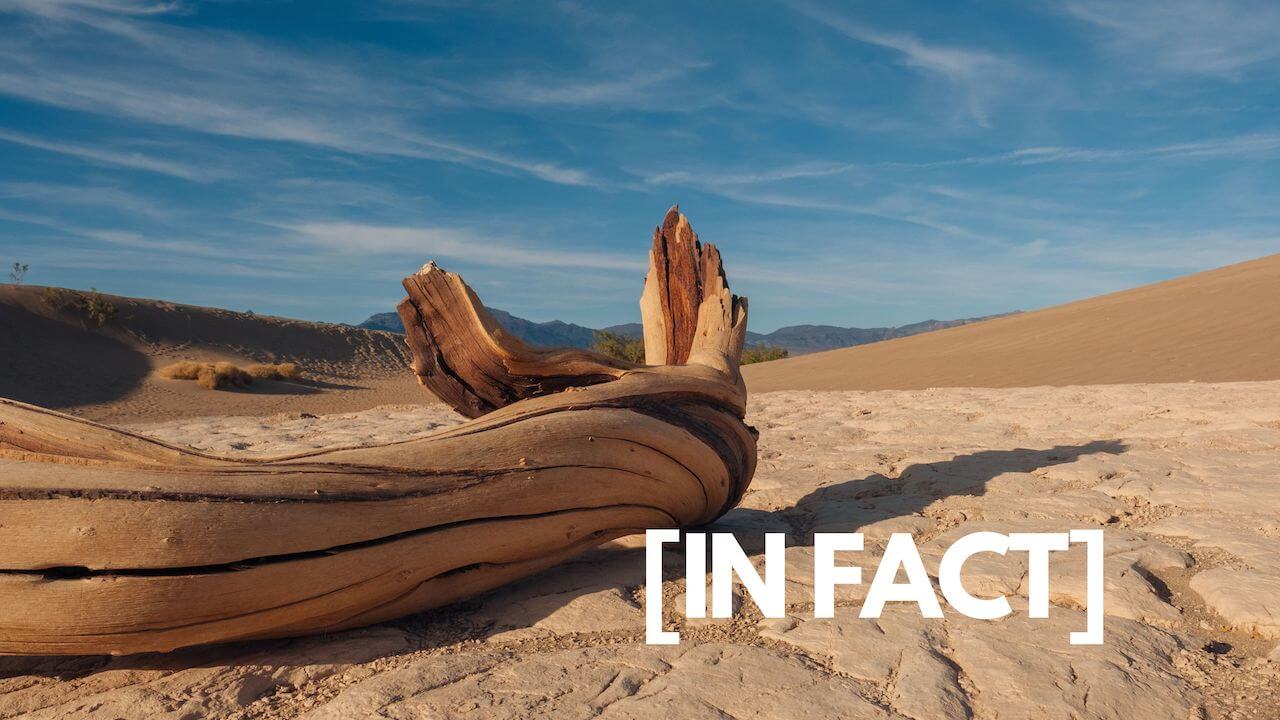
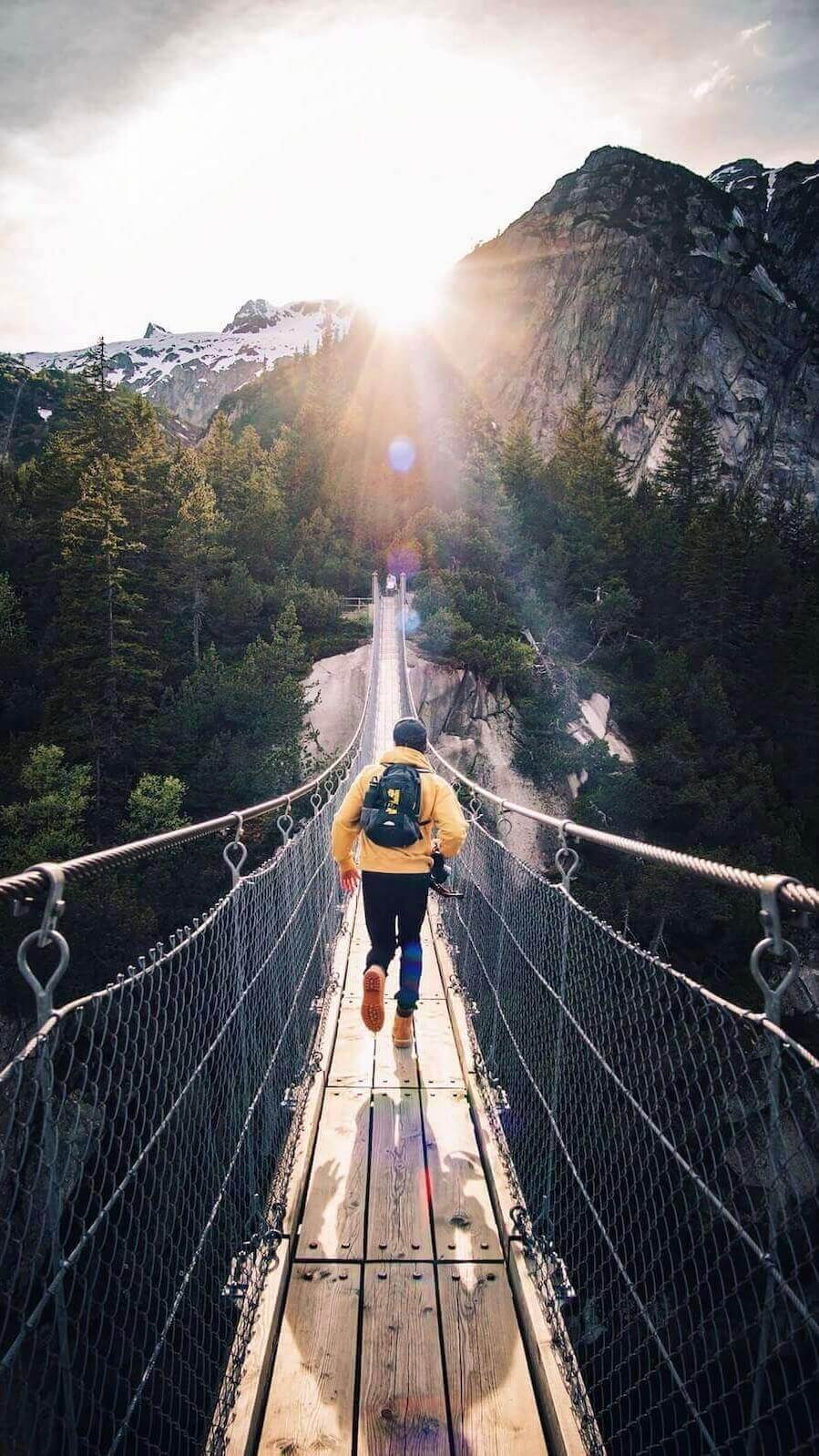
Stephanie
Such beautiful places in our world – any travel photographer would enjoy these places. Even us amatuer photographers would get some great photos and have a blast at the same time.